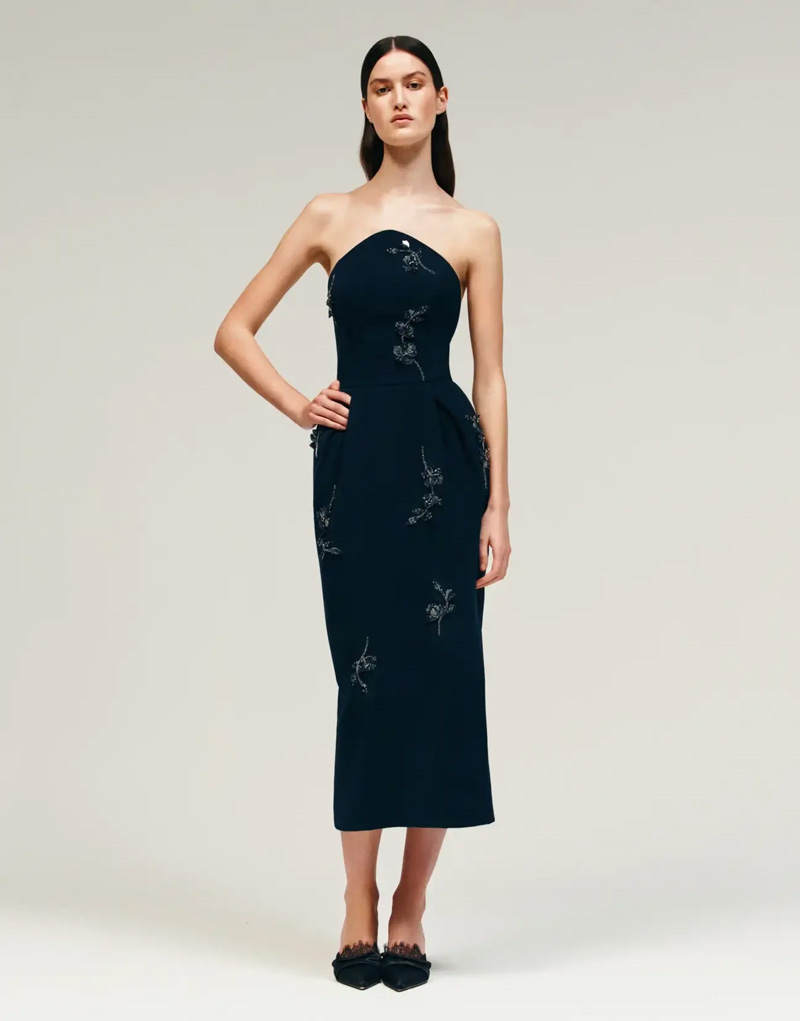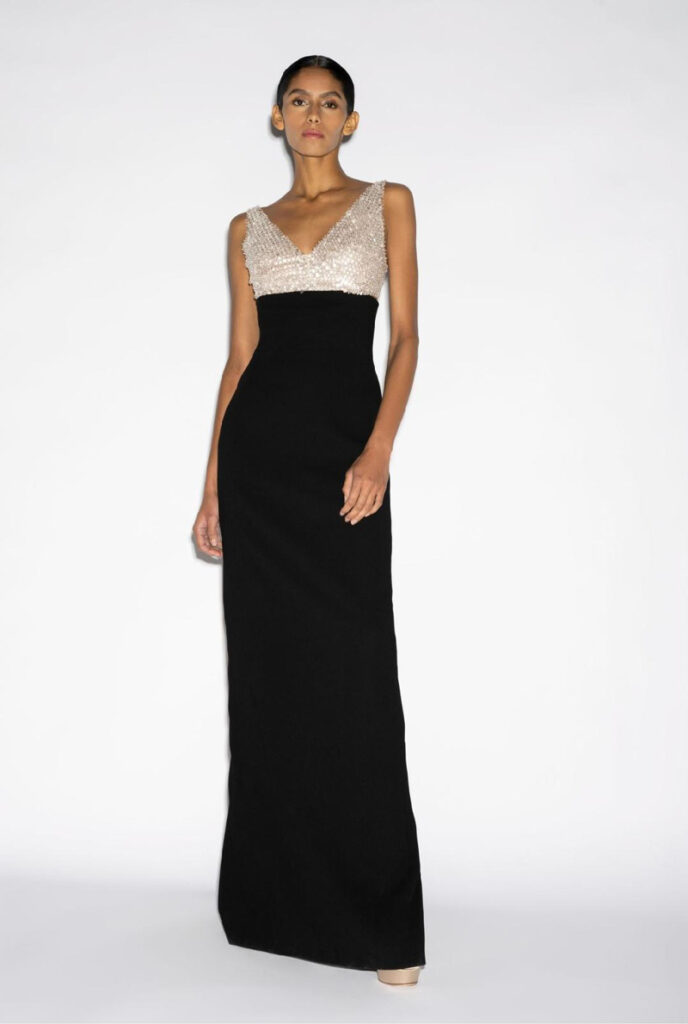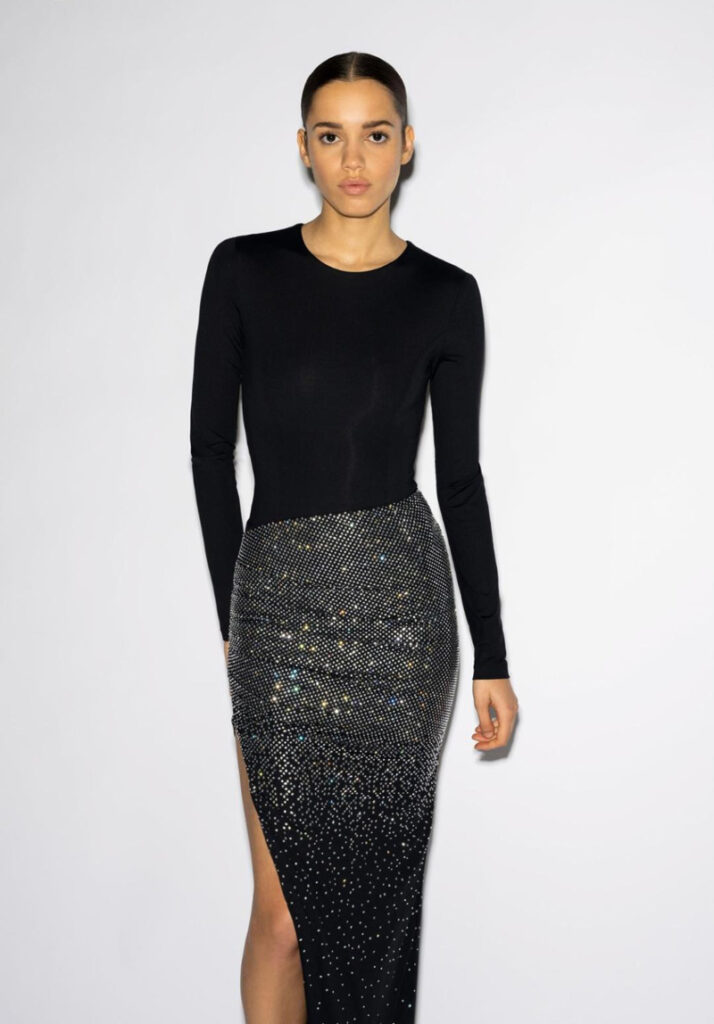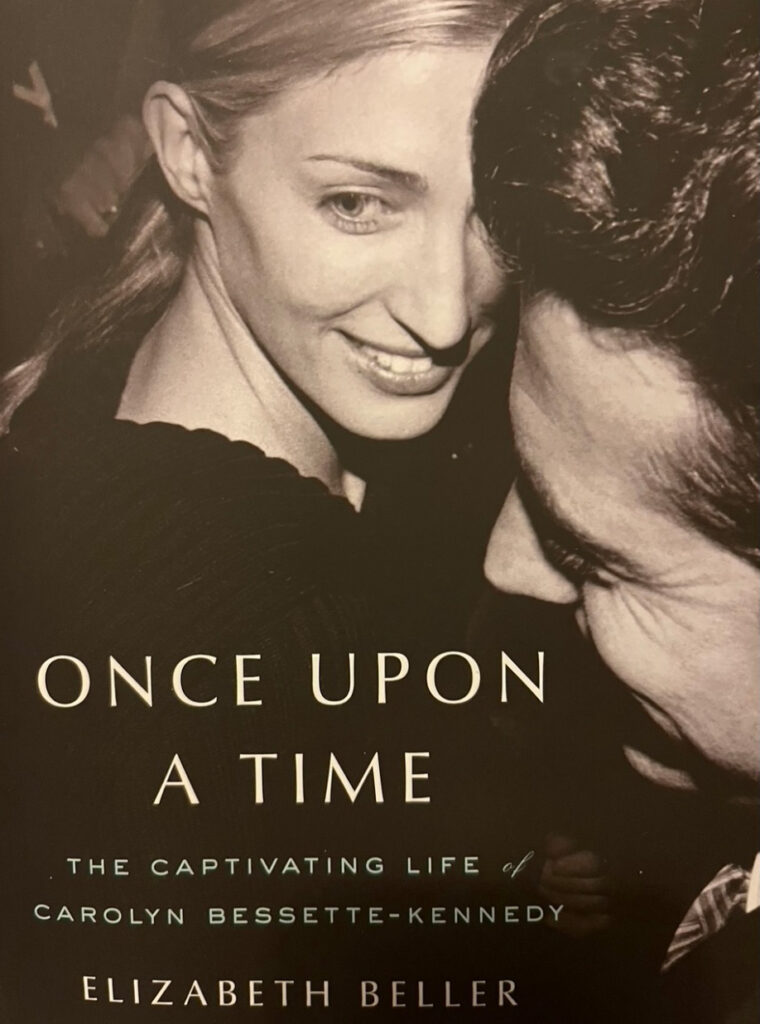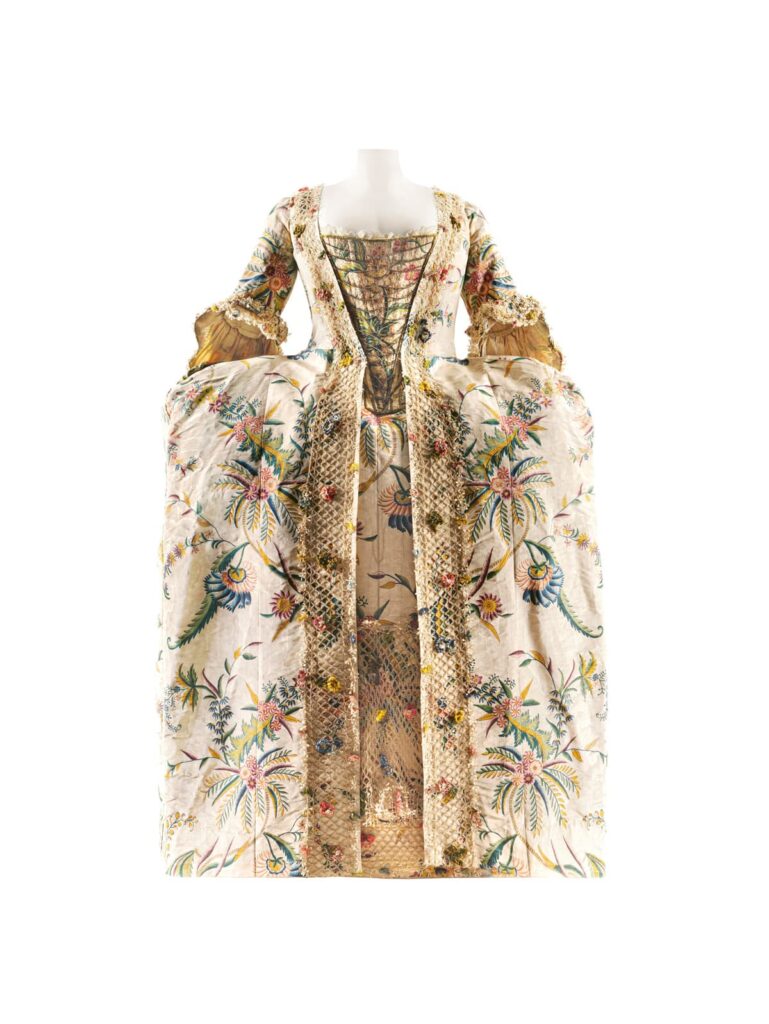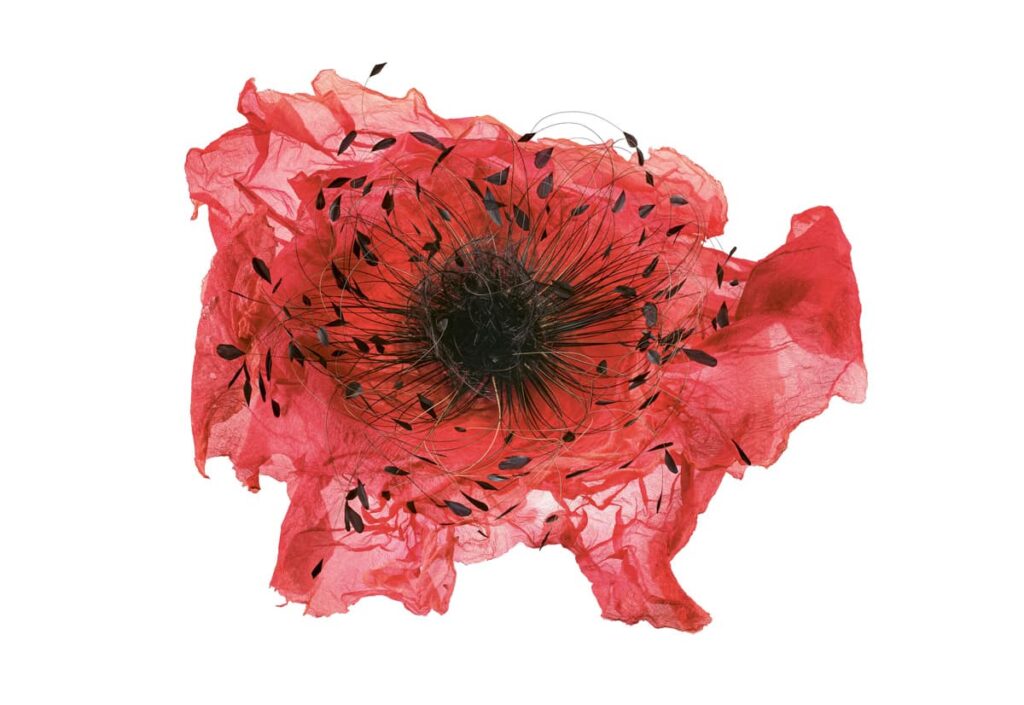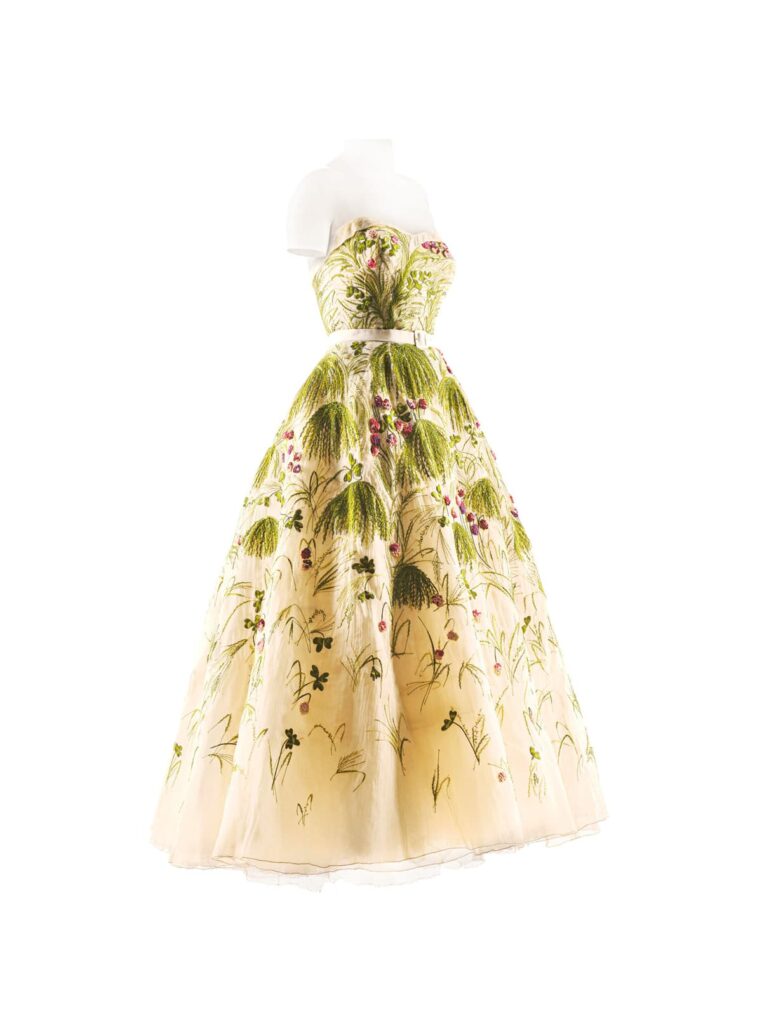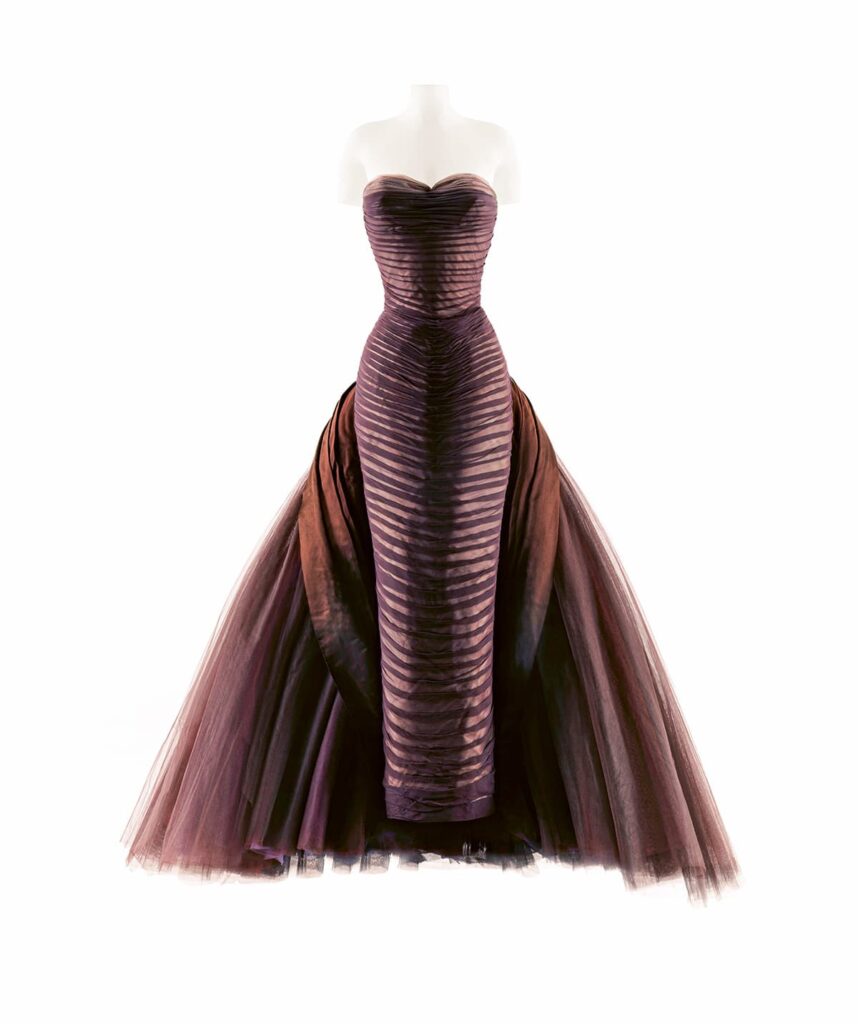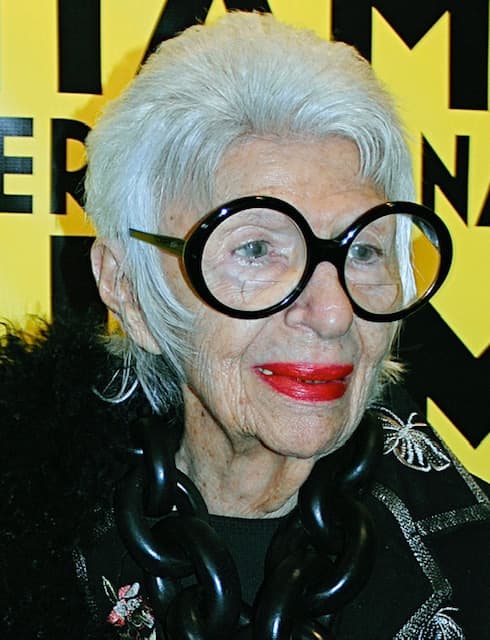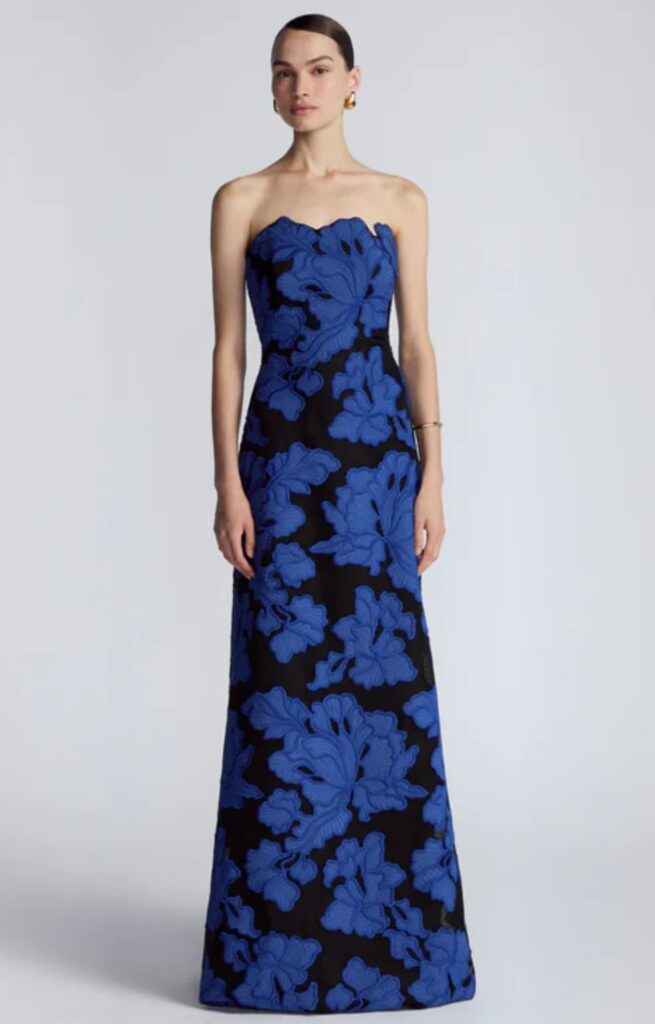
Lela Rose once said that she was dedicated to the idea that you should always be dressed, and with her designs you always are.
Think Renée Zellweger on the red carpet for the Sydney, Australia, premiere of “Bridget Jones: Mad About the Boy,” in a strapless, peony-pink column dress with a singular, folded bodice from Rose’s Pre-Fall 2025 Collection. Or Elizabeth Hurley in a long-sleeve, off-the-shoulder midi dress in Barbie pink with buttons down the front. (Other celebrity admirers have included Jessica Alba, Selma Blair, Jessica Chastain, Claire Danes, Laura Dern, Selena Gomez, Anne Hathaway, January Jones, Karolina Kurkova, Olivia Munn, Gwyneth Paltrow, Zoe Saldana, Uma Thurman, Olivia Munn, Chrissy Teigen, Sofia Vergara, Catherine, Princess of Wales, and former First Lady Michelle Obama.)
Or consider the strapless gown seen here with its slightly bell-shaped skirt, an evocation of the late 19th-century’s Gilded Age, and an oh-so-modern palette of electric blue on black. Whether her color schemes are boldly jeweled or flirtatiously pastel, Rose’s eye for the sculptural always delivers a flattering silhouette, including distinctive bodices and necklines that draw the eye upward.
Rose honed that eye in her native Dallas, Texas, and at the University of Colorado where she graduated in 1991 with a degree in painting and sculpture before going on to the Parson’s School of Design in New York City, now her headquarters. She worked with designers Richard Tylor and Christian Francis Roth before debuting her Lela Rose Collection in 1998 and gaining attention by designing Barbara and Laura Bush’s outfits for their father George W. Bush’s 2001 presidential inauguration. The debut collection was followed by Lela Rose Bridal in the fall of 2006 and, 12 years later, Pearl by Lela Rose, a more casual ready-to-wear line.
Today, Rose’s work also embraces clutches and jewelry to complete your ensembles as well as tablescapes, because, well, your entertaining should be as well-dressed as you are. It’s not surprising, then, that she would name her 2015 home entertainment book “Pret-a-Party” or that this Westerner — who lives in Jackson Hole Wyoming, and has a ranch in Texas, as well as a home in the Catskills — would follow up with 2023’s “Fresh Air Affair: Entertaining With Style in the Great Outdoors.” It dovetails beautifully with her Lela Rose Ranch Collection, with its hand-embellished seed beading, chambray and poplin fabrics and prints like her Rey Rosa “Western Toile.”
In a 2023 interview with Veranda magazine, Rose credited her mother for her love of entertaining with flair: “She was always in the kitchen cooking and dreaming up something spectacular,” Rose says. “For my birthday parties growing up, she would wrap up little trinkets and put them insidethe cake batter, so when you were served a slice, you’d find a little surprise. It was so magical and unexpected that I’ve passed this down to my own children – for any occasion there’s a cake.”
Whether it’s fashion or home design, for Rose the divine is always in the details.
Tags: Lela Rose, Jessica Alba, Selma Blair, Jessica Chastain, Claire Danes, Laura Dern, Selena Gomez, Anne Hathaway, January Jones, Karolina Kurkova, Olivia Munn, Gwyneth Paltrow, Zoe Saldana, Uma Thurman, Olivia Munn, Chrissy Teigen, Sofia Vergara, Catherine, Princess of Wales and former First Lady Michelle Obama, Lela Rose Ranch, Pearl by Lela Rose, Leila Rose Collection, New York City, Jackson Hole, Wyoming, Catskills, Dallas, Texas, Barbara Bush, Laura Bush, George W. Bush, Renee Zellweger, Elizabeth Hurley,

